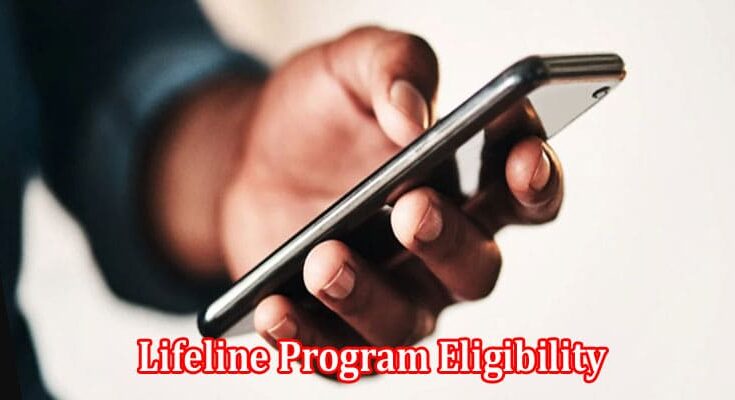In today’s digital age, access to communication is no longer a luxury but a necessity. The Lifeline program, established by the Federal Communications Commission (FCC), recognizes this need and aims to bridge the digital divide for low-income households. However, individuals must meet specific eligibility criteria for this crucial assistance. This comprehensive guide will explore the qualifications, application process, and essential lifeline program eligibility details.
Income Requirements
Income is the primary factor determining eligibility for the Lifeline program. To qualify, an applicant’s household earnings must be at or below 135% of the Federal Poverty Guidelines. These guidelines are updated annually and vary depending on the number of people in the household. It’s crucial to check the most recent guidelines to ensure accurate qualification.
Participation in Government Assistance Programs
Apart from income, participation in certain federal assistance programs automatically qualifies individuals for the Lifeline program. Such programs include:
- The SNAP or Supplemental Nutrition Assistance Program
- Medicaid
- SSI or Supplemental Security Income
- FPHA or Federal Public Housing Assistance
- Veterans Pension and Survivors Benefit schemes
If you are already enrolled in one of these programs, you may be eligible for Lifeline without meeting income requirements separately.
Tribal Lifeline Program
For residents of tribal lands, there is a specific Tribal Lifeline program that provides enhanced support. Eligibility for this program extends to those who join the Bureau of Indian Affairs General Assistance, Tribal TANF, and certain other tribal assistance programs. Additionally, if one’s household’s income is near 300% of the Federal Poverty Guidelines, one may qualify for the enhanced Tribal Lifeline support.
Documentation and Verification
To apply for the Lifeline program, you must provide documentation to verify your eligibility. This may include proof of income or participation in eligible assistance programs. Be prepared to submit documents such as tax returns, pay stubs, or program participation letters. It’s crucial to keep these documents up to date and readily available for the application process.
One Lifeline Benefit per Household
It’s important to note that Lifeline provides only one benefit per household, not per individual. A household is defined as any individual or group living together at one address and sharing income and expenses. Each eligible household can apply their Lifeline benefit to either a landline or a mobile phone service, but not both.
Application Process
Applying for the Lifeline program is a straightforward process. Folks can apply virtually through the National Verifier site or submit a paper application to your selected Lifeline service provider. Once the eligibility is confirmed, folks will receive a monthly discount on their chosen phone services. Recertifying one’s eligibility annually is essential to continue receiving Lifeline benefits.
Conclusion
The Lifeline program ensures that low-income households have access to essential communication services. Individuals and families can use this valuable assistance by understanding the lifeline program eligibility criteria and application process. Whether through income qualifications, participation in government assistance programs, or residing in tribal lands, Lifeline offers a lifeline to those who need it most. As you navigate the application process, remember that staying informed and providing accurate documentation are critical steps toward gaining access to this vital program. Bridging the digital divide starts with understanding the program eligibility and taking the necessary steps to secure your connection to the modern world.

Caroline is a dedicated writer with a passion for keeping readers informed. Specializing in providing the latest news updates and unbiased reviews, she strives to deliver accurate and insightful content. With a keen eye for detail and a commitment to journalistic integrity, Caroline ensures that her readers are always well-informed. Stay tuned for her latest articles to stay up-to-date on current events and trends.




